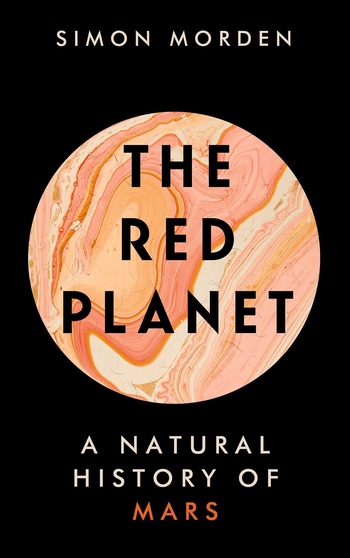Review: The Red Planetby Jeff Foust
|
| “Our view of Mars as cold, airless and dead is in need of serious revision,” he writes. “Its heart may be slowing, its lungs barely inflating, its blood sluggish, but there are planetary-scale systems still in motion.” |
Those are the questions that Simon Morden takes up in his new book, The Red Planet. Morden, a former planetary geologist who later became a science fiction writer, acknowledges at the beginning of the book that many of those questions lack definitive answers, but no shortage of potential explanations. “I’m here to tell you about Mars, with all its ambiguities, and about the times when, honestly, I think it’s lying to us,” he writes.
The book’s subtitle, “A Natural History of Mars,” is an accurate description of its contents. Morden goes through the planet’s geological history, from its formation with the rest of the solar system through its various eras to the present day. He examines what is known, and what isn’t, about the planet’s various features, from the “Great Dichotomy” between the cratered highlands of the southern hemisphere and the smooth lowlands of the northern hemisphere, to the formation of major features like Olympus Mons and Valles Marineris. While the book focuses mainly on geology, he does examine what conditions might have existed when for supporting life.
The book can, at times, be dense with geological terminology and the Latin-based terminology for those features as well as place names themselves; Morden offers an explainer at the beginning of the book but that can be lost later in the book. The electronic review copy provided for this review does not include any illustrations, which hopefully is an oversight. Images and illustrations would be helpful to explain both the features he describes in the book as well as the processes that may have formed them.
In the book’s final chapter, Morden takes up the issue of later human exploration and settlement of Mars. He doesn’t take a stand for or against such missions (nor mentions by name people pushing for them, like Elon Musk), but instead points out the both the benefits and drawbacks of sending people to Mars. “Even if we started out with good intentions not to change Mars, we’d do it anyway,” he argues, be it through biological contamination or using resources like ice that are also of scientific interest.
One message Morden concludes the book with is that Mars is not the dead planet many assume it to be, in either a geological or potentially biological sense. “Our view of Mars as cold, airless and dead is in need of serious revision,” he writes. “Its heart may be slowing, its lungs barely inflating, its blood sluggish, but there are planetary-scale systems still in motion.” Mars was never a second Earth, no matter how much we might like it to have been. “It was never ours. It is its own and we have to accept it for what it is.”
Note: we are using a new commenting system, which may require you to create a new account.
